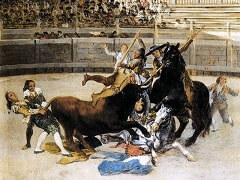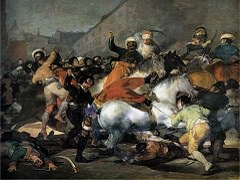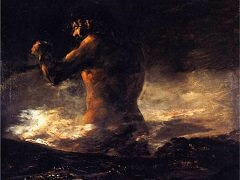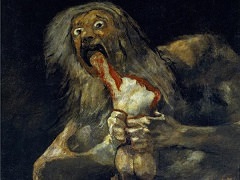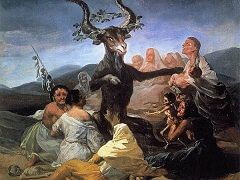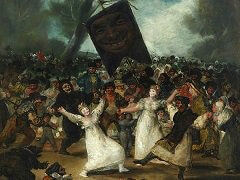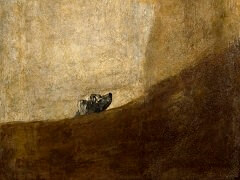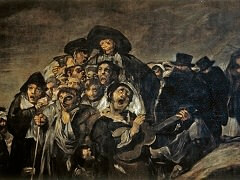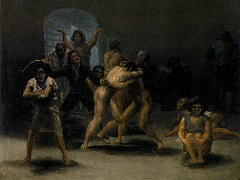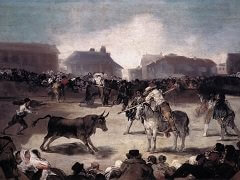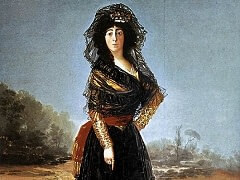The Third of May 1808 by Francisco Goya
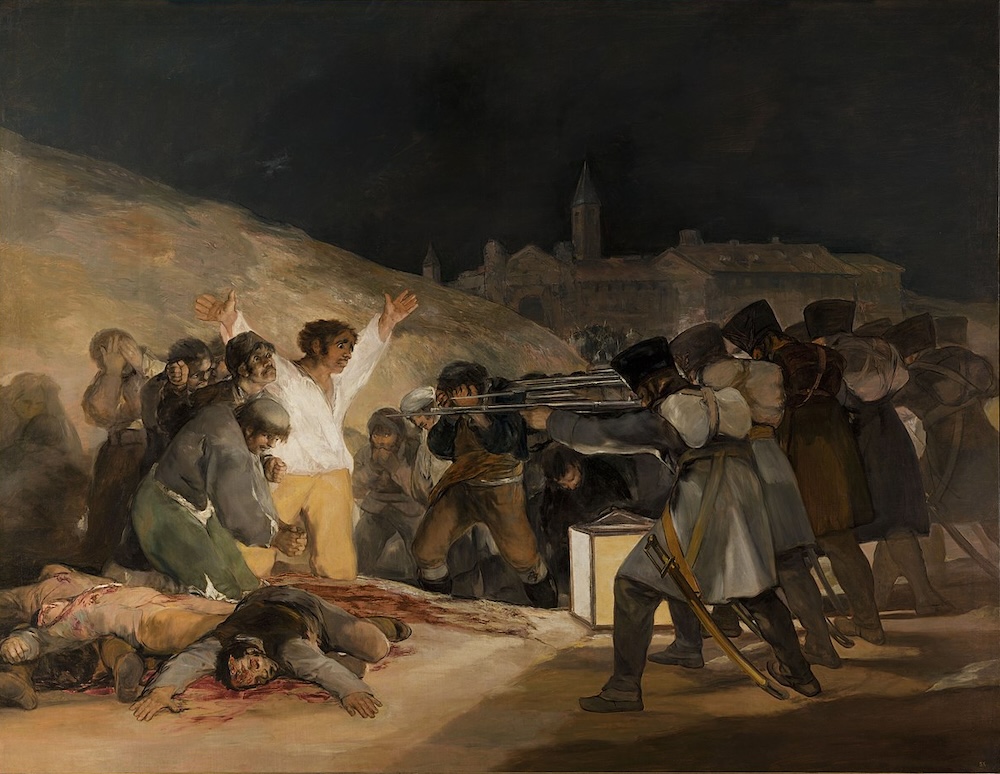
On 3 May 1808 Marshal-Prince Joachim Murat wrote to the Infante Don Antonio Pascual that he had executed about one hundred Spaniards, 'Peasants . . . our common enemy'. Later police reports recorded that the French executed mainly artisans, labourers, one or two policemen and beggars.
The works of art produced between 1809 and 1820 to commemorate the uprisings in Madrid, largely immortalized the casualties of street rioting, especially women, children and Spanish army officers. In Goya's picture, where the executions are imaginatively represented, the man in the white shirt, who seems to be Moorish, shares the features of the other condemned men which are crude, almost grotesque. Goya did not witness this event, but in his etchings The Disasters of War, begun c. 1810, similar executions are depicted with scrupulous accuracy. In this painting, however, almost every detail is incorrect: no firing squad would shoot at point-blank range or leave the prisoners unbound and without blindfolds; the force of musket-balls would impel the corpses backwards, not leave them sprawling in the foreground. And the central figure is kneeling; standing up he would be twice as tall as the soldiers. The townscape in the background is not an identifiable area of Madrid, but strictly a fantastic vista, recalling both in colouring and form El Greco's transfigured View of Toledo.



